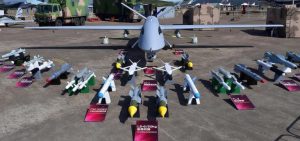Libya’s current conflict is emerging as a very different one to what has been fought before in the country, or the world. Fleets of long-range drones carry out strikes, cyber-attacks proclaim the end of governments, and social media propaganda has become all-consuming. The war has devolved into a bloody stalemate, with over 1 000 fighters dead and thousands wounded in grinding urban conflict, like reported by thisisafrica.me.
Khalifa Haftar’s Libyan Arab Armed Forces (LAAF), a militia coalition based in the east of the country, have been on a mission to seize Tripoli since April. The capital is held by the internationally recognised Government of National Accord (GNA), supported by militias from across western Libya.
But while it is Libyans who are fighting and dying, foreign actors have largely been driving this war. Turkey and Qatar support the GNA, while the United Arab Emirates (UAE), Egypt, Russia and France are behind the LAAF. These foreign backers have contributed diplomatic support, military equipment, mercenaries and military personnel, and direct military action to the two sides.
The use of drones, cyber-attacks and social media propaganda, among other dynamics in Libya’s conflict, probably portend what armed conflict in this century will look like – both within and between states.
In six months, drones have become a mainstay of Libya’s conflict. While they have been fielded by Libyan militias before, including by the LAAF in the battle for the eastern city of Derna, it was not until the present conflict that their use became systematic and militarily important.
According to Ghassan Salamé, the United Nations Special Representative for Libya, the current conflict has seen some 900 missions flown by drones fielded by the two sides, and this has increased steeply in recent weeks. Both sides use them for surveillance, long-range strategic strikes on arms depots and airports, and close-air support to units enmeshed in urban combat.
The GNA and LAAF rely on foreign actors for their drones. Since May, Turkey has supplied the GNA with more than a dozen Bayraktar TB2 craft, as well as ground control units. The UAE has provided the LAAF with the Chinese Wing Loong II drones. Both Turkey and the UAE are rumoured to have deployed personnel to Libya to operate the drones.
Armed drones are ubiquitous in Libya, and will be on future battlefields, both due to the relatively high-precision attacks they can undertake and because they are far cheaper than traditional attack aircraft. A Wing Loong II costs US$1-2 million, and even the pricier Bayraktar is just less than US$6 million.
Militaries can therefore more easily purchase and field large numbers of drones, and replace those lost in combat. Other countries – such as the UAE and Turkey – can also provide foreign proxy forces and militias with effective airpower at little cost and limited risk to their own personnel. Recent use by GNA drones of roads, rather than airstrips, for take-off and landing, shows the ruggedness of the craft, and the potential for their use even in austere conditions.
Alongside drones, hacking and cyber-attacks have been weaponised in Libya’s conflict. The most publicised incident occurred in August when the GNA Twitter account was hacked, and a false statement posted proclaiming the GNA had stepped down and security was to be left to the LAAF.
In another incident, a hacker culled information from Facebook users after setting up a series of false pages detailing Turkish activity in Libya or spoofing LAAF recruitment sites. The hacker later published secret LAAF documents and the passport information of government officials that had been collected.
Similar to drones, cyber-attacks offer a low-cost means of achieving conflict goals. The hacking of the GNA Twitter account led to little more than public confusion, but given the increasing importance of social media for government’s public communications – in both Libya and globally – the risk of a future incident achieving greater goals is real.
Libya’s conflict has also seen a wave of propaganda and disinformation as the GNA and LAAF, and their foreign backers, seek to shape public opinion to their advantage. Haftar’s initial attempt to seize Tripoli rested as much on the narrative of the LAAF’s might and inevitable victory as it did on raw military power.
With this narrative shredded by the LAAF’s failure, propagandists on both sides have tried to reshape public attitudes and support. Social media posts proclaim their side’s seizure of territory or inevitable victory, or their rivals’ brutality against civilians and foreign connections.
A lot of the propaganda is foreign generated, with nearly a third of content around Haftar posted over the past six months coming from Saudi Arabia. Much of this has been disseminated through social media, showing that sites such as Facebook and Twitter are go-to sources for news and information for many Libyans.
Propaganda has long played an important role in conflict. But what Libyan propogandists and their backers have shown is the speed through which new narratives and disinformation can be spread, how social media can be used for this, and how easily foreign actors can influence and engage in public debates in Libya in real time.
Each of these factors – drones, cyber-attacks and social media propaganda – have been used to varying degrees individually in different countries over the past two decades. Drones in particular are evolving rapidly into a versatile threat to even highly advanced militaries.
However Libya’s uniqueness – and its value as an example of what future conflicts will look like – arises because all these factors are currently being employed together in large amounts, in a conflict being prosecuted primarily by non-state armed groups.
It is important to closely watch Libya’s conflict to predict future wars. Understanding the contours of future battles, and how foreign actors can intervene, will help prevent and address conflicts. In Libya’s case, the country needs international support to surmount these conflict dynamics. The successes and challenges it faces will offer valuable lessons for peacebuilding in future.



